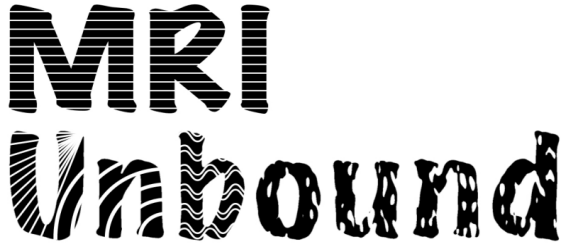|
|
|
Simulated Data |
Please read the instructions for each data set before downloading. The first three data sets are from the 2010 ISMRM Recon Challenge. The available poster gives examples of the entries. Registrants to the 2010 ISMRM Annual Meeting can hear radiologist’s comments and see the results by visiting here.
1. Need for Speed.
Data were simulated using collected projection X-ray of an arterial
bolus injection in a patient with an AVM. X-ray data were collected
3 frames per second, for a total of 10 seconds (31 collected frames)
which span wash-in to wash-out. These were linearly interpolated in
time between frames to create a total of 200 temporal images, each
with 512x512 resolution. B1-maps (provided with data) derived from
an axial slice through a water phantom using an 8-channel head coil
were superimposed on the image to create 8 “coil” images.
Independent noise was added to each channel. The data were
synthesized over 200 trajectories, each with 2000 points. Data for
each trajectory are synthesized from one temporal frame of the time
series.
You may then choose from any of the following sets:
A.
Click here to get a Spiral trajectory coordinates
and data. (trajectory designed by Nick Zwart,
B.
Click here to get a PR trajectory coordinates and
data. (trajectory designed by Alexey Samsonov,
2. Double Vision.
Data originate from 12 axial images in the abdomen (respiratory
gated T2 FSE with Fat Sat) collected using a torso phase-array coil,
collected at 320x320 matrix (40cm FOV). Field maps (breatheld, end-exhilation,
with Fat Sat) were collected using gradient echo images at TE = 3
and 5, with a 96x96 collected matrix. Synthesized data were
corrupted by off-resonance phase. Data from each of the 8 coils
were generated. B0 and B1 maps are provided with the data. (B0 maps
are in units of Hz). The data were synthesized over 8 trajectories,
each with 20,000 points. The dwell time was 1usec, e.g. the time
for each acquisition was 20msec.
Click here for the DV truth data set, which has no header,
is floating point (4 byte) real data, and arranged as a 3D array of
320x320x12. You may choose from any one of the following sets:
A. Click here to get a Spiral trajectory coordinates and data. (trajectory designed by Craig Meyer, University of Virginia)
B. Click here to get an EPI trajectory coordinates and data. (trajectory designed by Jim Pipe, Barrow Neurological Institute)
3. Piece of the Puzzle.
Data are from axially collected 3D unspoiled Gradient-Echo images of
the knee, 320(X) x 320(Y) x 220(Z), with 0.5mm resolution in each
direction (FOV = 160mm x 160mm x 110mm). Data are from an 8-channel
phased-array, with coils in the x-y plane, i.e. very little coil
orthogonality in Z. Contestants will get separate data for each
coil. Independent noise was added to each channel. The data were
synthesized over 4,000 trajectories, each with 2,000 points, which
results in total undersampling of rough R=5, depending on the
trajectory set.
Click here for the POP truth data set, which has no header,
is floating point (4 byte) real data, and arranged as a 3D array of
320x320x220. You may choose from any one of the following sets:
A.
Click here to get a Random - Poisson Disk
trajectory coordinates and data. (trajectory designed Miki Lustig,
B.
Click here to get a Spiral Projection (low resolution)
trajectory coordinates and data.
C.
Click here to get a Spiral Projection (high
resolution) trajectory coordinates and data.
D.
Click here to get a Stack-of-Spirals trajectory
coordinates and data.
E.
Click here to get a VIPR trajectory coordinates
and data. |
